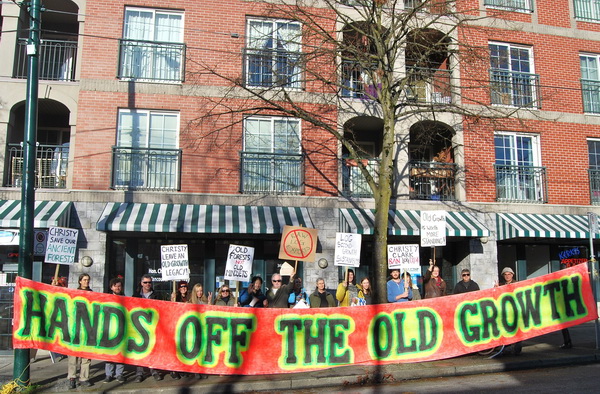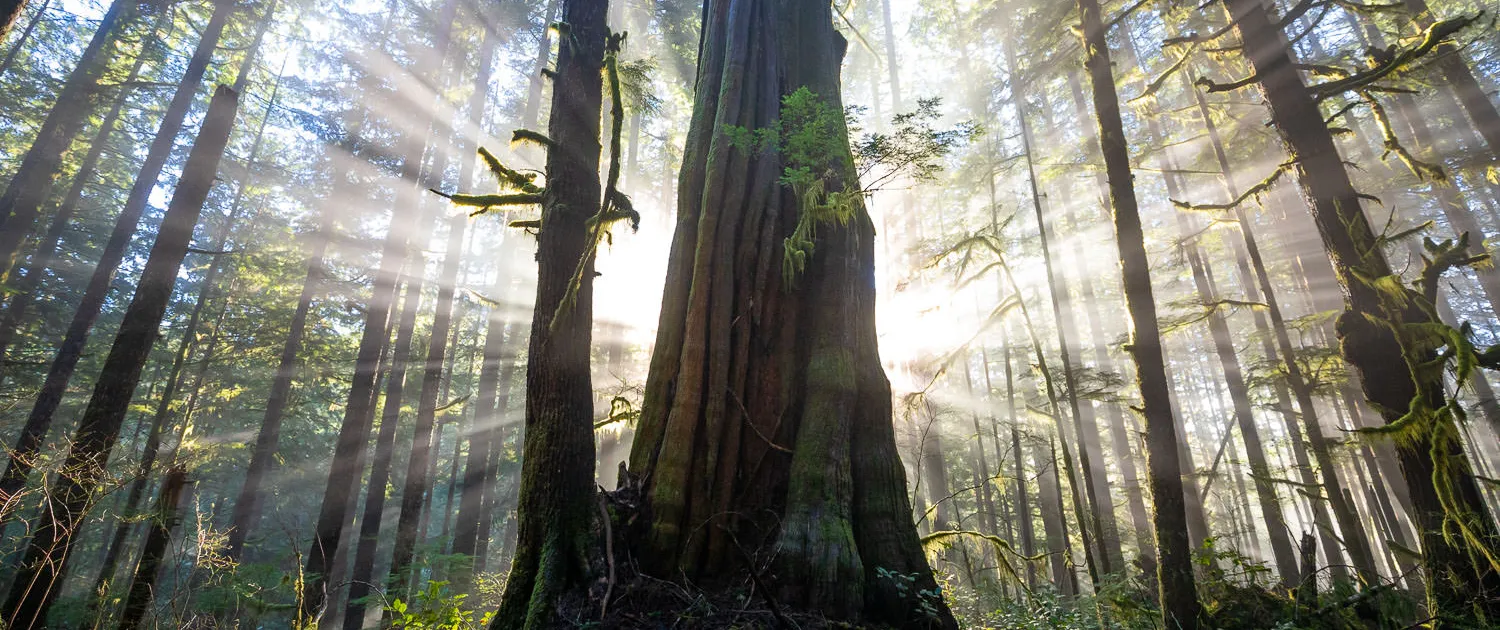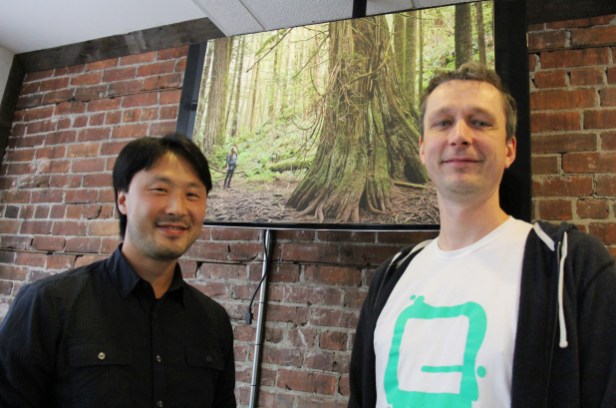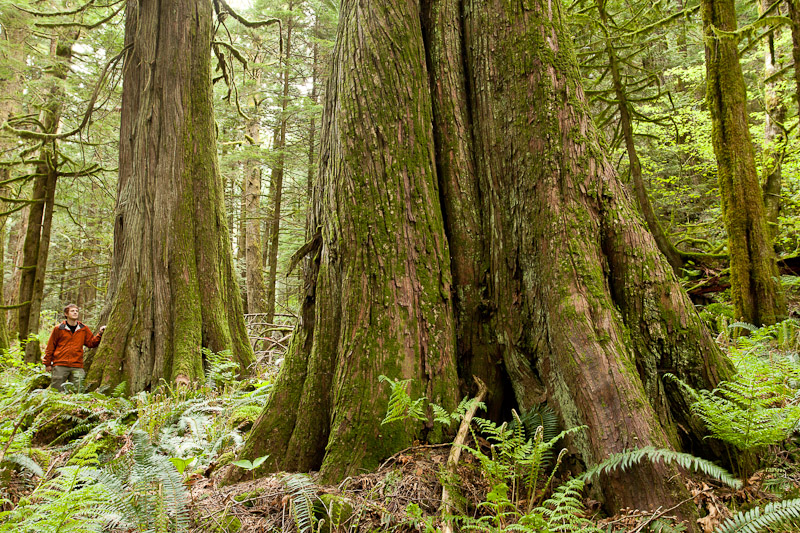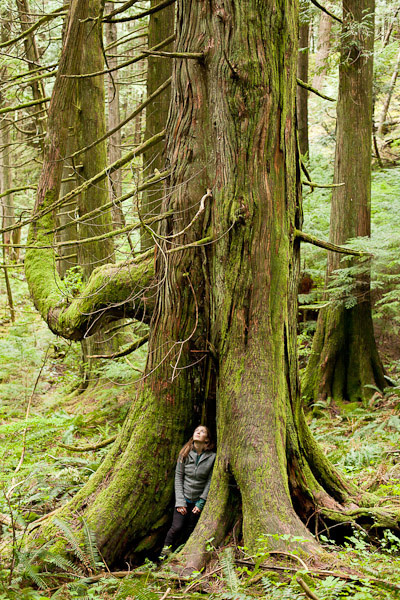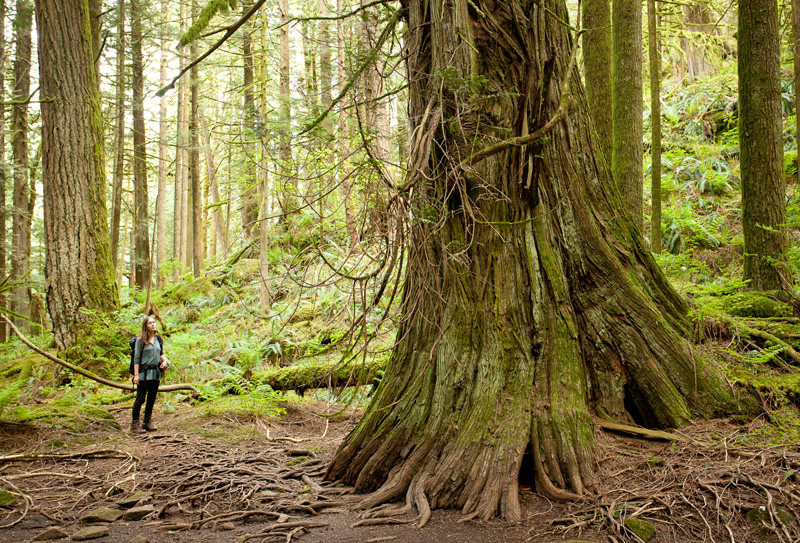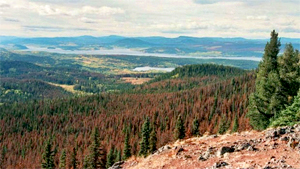The campaign to protect British Columbia’s endangered old-growth forests has gained a unique and powerful new supporter: East Side Games is an independent, Vancouver-based tech company that specializes in developing online games for social media and mobile platforms and that has over one million Facebook fans around the world. It is the largest social and mobile game developer in Vancouver.
The company (https://eastsidegamestudio.com) is providing online social media support for the Ancient Forest Alliance (https://staging.ancientforestalliance.org) to help raise awareness and to mobilize the public to protect BC’s endangered old-growth forests, along with a substantial donation. The campaign includes a focus on saving a magnificent stand of old-growth trees at Echo Lake east of Mission, home to hundreds of roosting bald eagles each fall.
The extent of company’s social media reach to help the environmental campaign was demonstrated last week when almost 6000 people “shared” a Vancouver Sun article about the Echo Lake Ancient Forest after it was posted on one of Eastside Games’ Facebook fan pages
(see the article at: https://www.vancouversun.com/search/Province+urged+protect+Harrison+eagles/7371025/story.html)
The company’s CEO, Jason Bailey, is a former environmental activist who worked with the Ancient Forest Alliance’s (AFA) executive director, Ken Wu, over 20 years ago to protect old-growth forests through a small East Vancouver environmental group. Bailey is challenging other Vancouver tech companies to also come forward and support the AFA’s campaign, and will also match the donations of any Eastside Game employees who wish to support the AFA. Over 4 million people have played East Side Games’ Facebook games over the past three years, and Bailey will begin using the network to help promote the AFA’s petition-drives, letter-writing campaigns, and awareness-raising efforts to protect BC’s ancient forests.
“BC’s economy has diversified over the past 20 years and is no longer dominated by old-growth logging. BC’s tech sector is now a major and growing economic engine in the province, employing 80,000 people – almost twice that of forestry in the province. The skilled labour force that the tech sector draws from has chosen to locate in BC in large part because of its natural beauty and the work-life balance provided by its forests, mountains and wild coast,” stated Jason Bailey, Eastside Games CEO. “We’ll be providing major social media and financial support for the Ancient Forest Alliance. We’ll be leveraging our tech industry connections as well as our millions of local and international users to bring more awareness to BC’s natural beauty and the threat that it is under. My staff and I were really blown away by the magnificent ancient trees upon visiting Echo Lake last summer, and I’m determined to help see the area protected.”
“While the tourism sector has supported the ancient forest movement in BC, this will be the first time that a major tech business has weighed-in to help that I’m aware of. Social media in today’s world can have a public reach on par with the major news media in some cases, and East Side Games’ support with their one million plus Facebook fans will represent an unprecedented surge in social media awareness for BC’s ancient forests. In addition, being a small and new organization, their generous donation to the Ancient Forest Alliance will go exceptionally far to help our campaigns,” stated Ken Wu, the AFA’s executive director. “I hadn’t seen Jason in literally 20 years until a few months ago when we met in a Vancouver taco shop. I’m impressed that he’s still basically the same guy who loves nature and supports environmental activism– except that today he’s not the broke East Van hippie that I knew back then. His circumstances have changed, he’s grown up as we all have, and he has much more powerful means at his disposal to help the cause and is putting them into effect now – for which we’re most grateful.”
The Ancient Forest Alliance has launched a new campaign to protect one the last endangered lowland old-growth forests left in the Lower Mainland at Echo Lake between Mission and Agassiz. The lake includes a spectacular, monumental stand of giant redcedars and extremely rare old-growth Douglas firs, 99% of which have already been logged on BC’s coast. Virtually all low elevation old-growth forests in the region have been now been logged, with most remaining old-growth stands consisting of smaller trees at higher altitudes on steep slopes. The area is in the traditional, unceded territory of the Sts’ailes First Nations band (formerly the Chehalis Indian Band).
See SPECTACULAR photos of Echo Lake’s ancient forest at: https://staging.ancientforestalliance.org/photos-media/
In September, the BC Ministry of Forests, Lands, and Natural Resource Operations launched a 60 day public review ending on Nov.5 of proposed Old-Growth Management Areas that would prohibit logging as part of the process to complete the land use planning process in the Chilliwack Forest District. See: [Original article no longer available]
Unfortunately, while the BC government’s newly proposed Old-Growth Management Area for Echo Lake would protect a portion of its old-growth forests on the south side of the lake, it would exclude some of the finest old-growth stands on the west and north sides of the lake.
Echo Lake is home to one of the largest concentrations of bald eagles on Earth. Thousands of eagles come each fall to eat spawning salmon in the Harrison and Chehalis Rivers and hundreds of eagles roost in the old-growth trees at night around Echo Lake. It is also home to a large array of biodiversity including bears, cougars, bobcats, deer, mountain goats, and osprey, and until recent times was populated by the critically endangered northern spotted owl.
The vigilance of local landowners on the east side of Echo Lake, whose private lands restrict public access to the old-growth forests on the Crown lands on the west side of the lake, have held-off industrial logging of the lake’s old-growth forests thusfar. Across the southern coast of BC, over 80% of the original, productive old-growth forests have already been logged.
While the Ancient Forest Alliance is calling for the protection of Echo Lake’s forests, the organization is primarily calling for a larger provincial plan to protect the remaining endangered old-growth forests across BC while expanding sustainable second-growth forestry jobs. In particular, some of the key policy shifts the organization is calling for include:
- A Provincial Old-Growth Strategy that would inventory the remaining old-growth forests in BC and protect them in regions where they are scarce (egs. Vancouver Island, the Lower Mainland, southern Interior, etc.)
- A shift to sustainable logging in second-growth forests, which now constitute the vast majority of forested lands in southern British Columbia.
- An end to the export of raw logs to foreign mills in order to ensure a guaranteed log supply for BC mills and value-added manufacturers.
- See the stunning photogalleries and videos of BC’s coastal old-growth forests on the Ancient Forest Alliance’s website at: https://staging.ancientforestalliance.org/photos-media/
“How many jurisdictions on Earth still have trees that grow as wide as living rooms and as tall as downtown skyscrapers? And how many jurisdictions still consider it okay to turn such trees in giant stumps and tree plantations? What we have here in BC is something exceptional, the likes of which won’t be seen again for a long, long time if they are logged,” stated AFA executive director Ken Wu. “More than ever we need the BC government to have the wisdom and courage to move ahead with a plan that protects our endangered old-growth forests, ensures the sustainable logging of second-growth forests, and ends the export of raw logs to foreign mills”.
“Having had some successes in recent years with my entrepreneurial endeavours, I am fortunate to be in a position to give back to this province in more ways then just paying large tax bills. Together with the tech community we can help to protect these exceptionally beautiful ancient trees and ecosystems for future generations while continuing to diversify the economy by creating more jobs in non-resource based industries.”
Recent News articles:
METRONEWS (October 11): [Original Metro News article no longer available]

